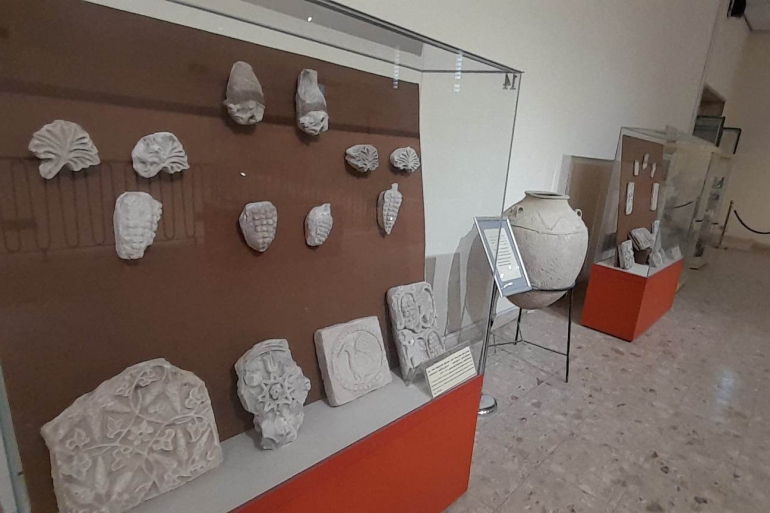Located in the heart of the capital Baghdad, entering the Iraq National Museum feels like traveling back in time thousands of years.
Beyond the gate live the legacy of the Sumerian, Assyrian, Babylonian and Akkadian civilizations of Mesopotamia.
But while the sculptures are impressive, they are only a small part of Iraq’s ancient heritage – one that has been ravaged by years of destruction and looting.
This is an issue that the Iraqi state is working to fix.
The years following the United States’ invasion of Iraq in 2003 saw large numbers of antiquities stolen, both from museums, such as the Iraq National Museum, but also due to illegal excavations at archeological sites throughout the country.
Objects were also destroyed, especially during the rise of ISIL (ISIS) after 2014.
Hakim al-Shammari, media director of the General Authority for Antiquities and Heritage at the Iraqi Ministry of Culture, says efforts are ongoing to recover the stolen antiquities.
“We are working on returning these pieces to their original homeland in accordance with international agreements that insist on the return of cultural property,” Al-Shammari told Al Jazeera.
“Iraq has managed to recover about 17,000 artifacts from the United States and 364 from Lebanon in recent years,” said al-Shammari, who estimates the total number of looted antiquities to be in the thousands. “Work to recover antiquities is underway in France, Germany, Italy, Belgium, Egypt, Saudi Arabia, Kuwait, Iran and Jordan, which are different and varied.”
Most recently on March 30, the Iraqi Presidency announced the return of nine stolen artifacts from the US, including seven Babylonian seals, a piece of ivory in the shape of a human face, and a clay tablet from the Middle Babylonian era . ,
partial success
While the government’s success in returning some antiquities has been lauded, much work remains to be done, according to Haider Farhan, professor of archeology at the University of Baghdad and antiquities expert.
Farhan said, “The Iraqi government’s efforts to negotiate the recovery of the stolen antiquities … are positive.” “But these efforts have not fully lived up to expectations … and what has been achieved is partial success.”
Farhan said, “There is no official figure on how many antiquities were stolen from Iraqi museums, and the numbers given are actually inaccurate and incomplete when looking at official lists of Iraqi museum holdings.”
The Iraqi Foreign Ministry, which is responsible for the return of Iraqi antiquities from around the world, did not respond to questions sent by Al Jazeera. However, Foreign Minister Fouad Hussein previously stated that 18,000 smuggled artifacts had been returned to Iraq, and expressed hope that international cooperation and coordination would help return all stolen items.
The Baghdad office of the United Nations Educational, Scientific and Cultural Organization (UNESCO) told Al Jazeera that it was working with the Iraqi government to recover more than 40,000 artefacts that have been lost and scattered around the world, in addition to another 30,000 pieces that had already been recovered. Between 2017 and 2022.
Other items are being held in Iraqi embassies and antiquities loan centers around the world until suitable storage centers can be found in Iraq.
lack of american security
For many Iraqis, much of the blame for the loss of so many pieces of their country’s history rests with the United States.
At the time of the invasion, US officials were reported to be frustrated at the military generals’ lack of willingness to protect archaeological sites such as the Iraq National Museum.
Archaeological researcher Amer Abdul-Razzaq says the negligence was deliberate.
“American tanks surrounded the Iraqi museum during the occupation and chaos, but they did not lift a finger in the face of the mafia and antiquities thieves who attacked the museum and stole some 14,000 valuable pieces from it,” Abdul-Razzaq, who previously Had served as director of antiquities in the Iraqi province of Dhi Kar, said.
“Although the US military was later committed to protecting Iraqi antiquities due to pressure from Iraqi archaeological institutions, it initially took archaeological sites as bases and camps, including the city of Ur in Dhi Kar province, and they kept their heavy military equipment there. The Ziggurat of Ur,” Abdul-Razzaq said, referring to the ancient Sumerian city-state and its famous monument.
Abdul-Razzaq said, “The American army turned the ancient city of Babylon into a military base, to the extent that they built earthen mounds, and some of it was made from clay cuneiform figures.” “It is on par with the city of Nimrud in Mosul and other archaeological sites across the country.”
And while the US has already sent thousands of artifacts back to Iraq, Abdul-Razzaq believes it’s still not enough.
“What has been recovered is small. There are pieces still selling at auction in the US and UK and other countries,” Abdul-Razzaq said. “We need greater diplomatic efforts and international cooperation.
Twenty years after the US invasion, where are Iraq’s antiquities?




